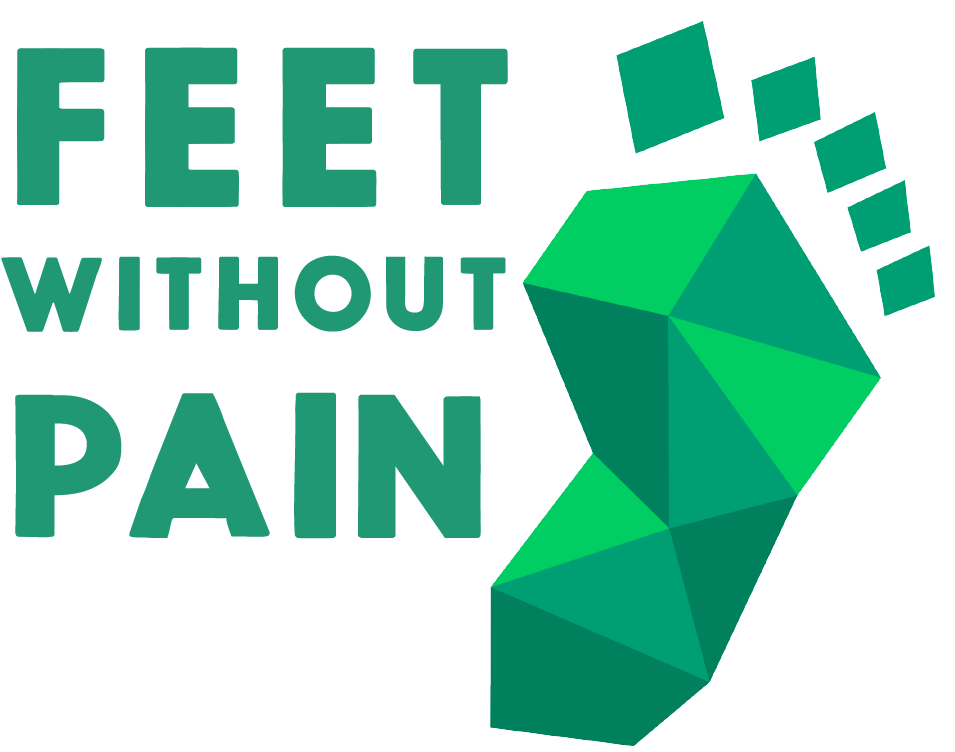1st Metatarsal
The first metatarsal is the long bone in the forefoot, with the head articulated with the “toe” and the base connected to the cuneiform (tarsal bone). As it is the strongest of the metatarsals, it is responsible for absorbing most of the load when walking and is essential for supporting the foot on different surfaces.
Pain in this region, the ball of the foot, frequently occurs as a result of high-impact sports or wearing poorly fitting stiff shoes for a long time. First metatarsal pain causes may be related to conditions of metatarsalgia, bunions, very high arches, hammer toes, or sesamoiditis.
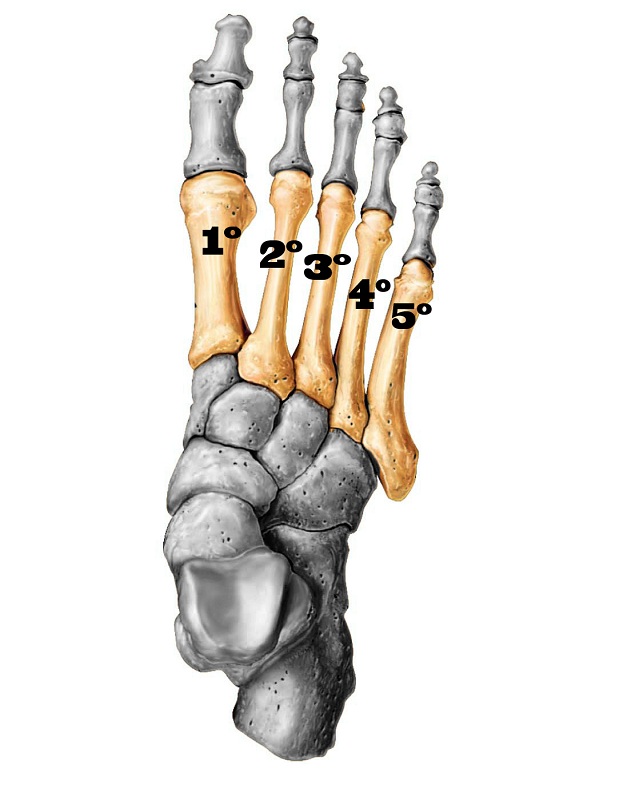
CAUSES
First metatarsal pain causes are mainly related to overload and natural footstep misalignment. Obese people, athletes, or women who wear poorly fitting or high-heeled shoes are the most commonly affected by this type of pain felt in the ball of the foot.
Overload
According to the “Metatarsalgia”, study, the reasons for first metatarsal pain are mainly associated with excessive load and pressure applied on the metatarsal bone’s head. This condition results from wearing shoes and sandals that compress the toes, thus changing the natural position of the bones.
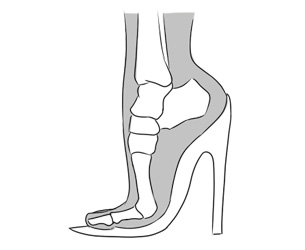
High heels overload the metatarsals.
Pain in the first metatarsal is much more common in women than men because they often wear high heels. This type of footwear disproportionately distributes the body’s weight onto the ball of the foot, overloading the metatarsal and altering the body’s mechanics.
Excess weight can also contribute to metatarsal pain, as the foot often has to support more load than is normal.
High-impact and high-intensity sports place a lot of physical demands and stress on the feet.
Alignment
Changes in step overload the first metatarsal, especially when individuals overpronate when walking (in these cases, the foot makes an “inward” movement, overloading the bone). Overpronated stepping can cause stress fractures in the first metatarsal due to repeated excessive pressure on the bone.
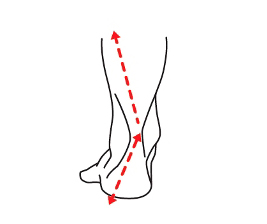
Foot structure positions in overpronated walking
Feet Without Pain insoles can benefit people with foot misalignment since they correct the footstep by redistributing the excess pressure on the first metatarsal to other foot areas.
Trauma
Pain in the first metatarsal related to trauma and injuries may be associated with long bone overload periods or stress from day-to-day activity. Feet Without Pain custom-made insoles can relieve metatarsal pain. However, it is important to have your feet evaluated and followed by a foot specialist since trauma-related foot pain can affect your quality of life.
MAIN PATHOLOGIES THAT CAUSE METATARSAL PAIN
Metatarsalgia is a condition in which the ball of your foot becomes inflamed and painful. This is caused by excessive strain on the metatarsal heads. It is also associated with the use of high heels, and poorly fitting or tight shoes so it is more common among women.
Bunions appear as bony bump that forms on the joint at the base of your big toe. This deformity is caused by the first metatarsal bone moving toward the inside of the foot and the big toe’s bones toward the smaller toes.
Wearing tight, narrow shoes might cause bunions or make them worse. Bunions can also develop as a result of the shape of your foot, a foot deformity, or a medical condition, such as arthritis. Smaller bunions (bunionettes) can develop on the joint of your little toe.
Sesamoiditis is an overuse injury involving chronic inflammation of the sesamoid bones and the tendons involved with those bones. It is caused by increased pressure on the sesamoids (small spherical bones enclosed by tendons connecting the first metatarsal head and the phalanx that increase the surrounding musculature efficiency). Often, sesamoiditis is associated with a dull, longstanding, localized pain beneath the big toe joint. The pain comes and goes, usually occurring with certain shoes or certain activities.
Pes cavus or cavus foot is a deformity causing an abnormally high plantar arch. This results in metatarsal overload. People who have this condition will place too much weight and stress on the ball and heel of the foot. Pes cavus can lead to other foot abnormalities over time.
The joint inflammation between the phalanx and the first metatarsal is called Hallux rigidus. It is the most common type of arthrosis (the progressive degeneration of the cartilage that covers the bones and leads to increased joint friction) of the feet and ankles, especially in the elderly, as the body naturally wears down its structures.
PREVENTION AND TREATMENT
The diagnosis to detect the cause of the first metatarsal pain should only be made by a medical professional who will know the best treatment to relieve discomfort. In some cases, the cause of the pain will be identified only after imaging tests. However, some measures can be taken to ease swelling and redness, such as:
– wearing comfortable and spacious shoes.
– avoiding the use of high heels and sandals with narrow tips.
– icing painful areas for 15 or 20 minutes at a time;
– decreasing the intensity of physical exercises and activities that place excessive stress on the feet.
– losing weight to reduce the overload on the first metatarsal
– using Feet Without Pain insoles.
Remember that medicines should only be used with a medical prescription, as self-medication is dangerous and can impair a patient’s well-being.
FEET WITHOUT PAIN® CUSTOM SHOES AND INSOLES FOR 1st METATARSAL PAIN
Using custom-made Feet Without Pain insoles relieves pressure overload on the first metatarsal. Our insoles have a surface depression, a cushion in the big toe area, and support in the plantar arch, improving pressure distribution on the feet.
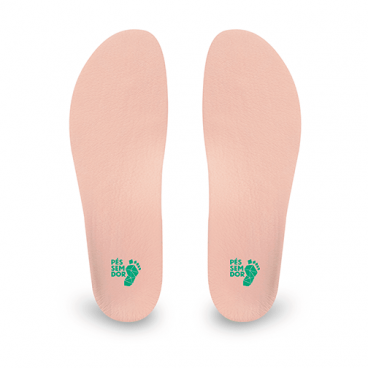
Custom-made shoes are manufactured to your specifications, taking into consideration the width and circumference of the metatarsals. The result is a perfect fit, with no excessive compression for those with wide feet and without being too loose. In addition, custom-made shoes can have one of our 3D-printed soles, guaranteeing excellent impact cushioning and good support.
The custom made insoles and shoes are made with 3D technology and millimetric digital precision after a free foot, ankle, and knee evaluation with our specialists at one of our branch offices. Check some of their benefits for your feet below:
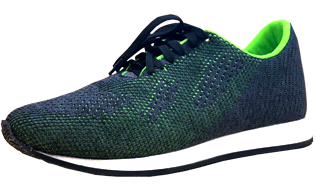
-
Elimination or reduction of pain;
-
Injury prevention;
-
Increased comfort;
-
Perfect fit;
-
Standing longer without pain or discomfort;
-
Prevention of pathologies progression;
-
Improved impact absorption;
-
Improved sports performance.
FREQUENTLY ASKED QUESTIONS (FAQs)

How to purchase your custom shoe or insole?
It’s fast and easy! Schedule a free evaluation of your feet with our specialists to buy your custom-made shoe.
Call, send a message to WhatsApp at 4003-8883, or visit: www.pessemdor.com.br/agendamento.
How does the evaluation work?
Upon arriving at a Feet Without Pain branch office, you will be received by a foot, ankle, and knee specialist, who will then fill out a registration form and answer some questions about your Pain. Next, the assessment of the feet begins.
The specialist will perform an anamnesis on your feet to understand your pains and complaints. Then, using the high-precision 3D scanner device, the specialist captures your feet’ measurements.
We are the only company with a 3D scanner for designing custom shoes. First, with the measurements of your feet, a mold is created using 3D printers, and after that, we start making your shoe.
How long does it take for the shoes and insoles to be ready?
Feet Without Pain produces custom-made shoes in up to 3 days; then, they are sent to your home free of charge!
Is the evaluation free?
Our assessment is completely free! We perform a complete analysis of your feet and legs, and you pay nothing for it!
Do we accept medical insurance?
We do not work with insurance because our assessment is completely free! But you can check if your plan somehow refunds you regarding the shoes!
EXTERNAL LINKS
1) Metatarsal Fractures | PDG Health
2) Metatarsal Factures | Clinic and Surgery of the Feet and Ankles
